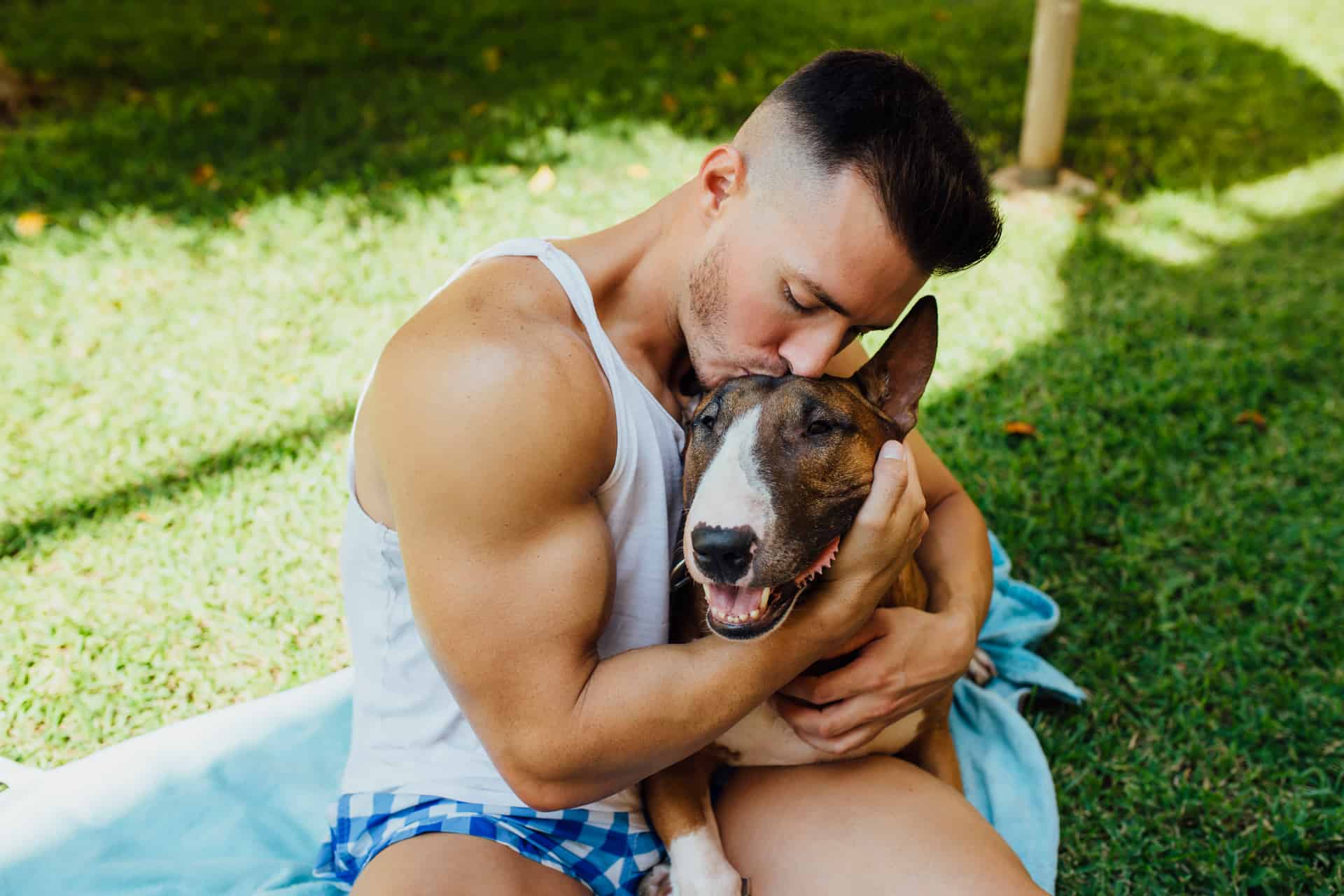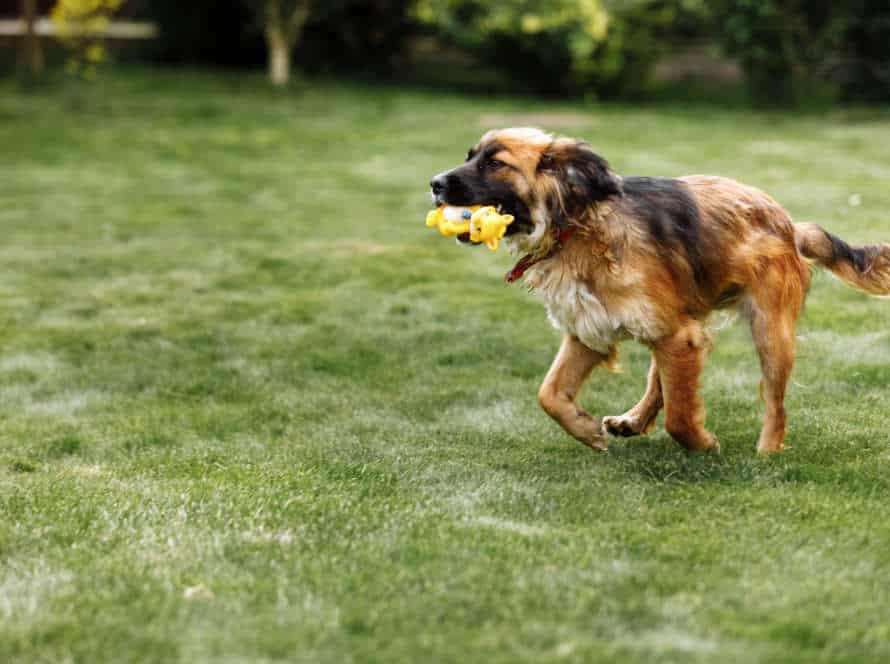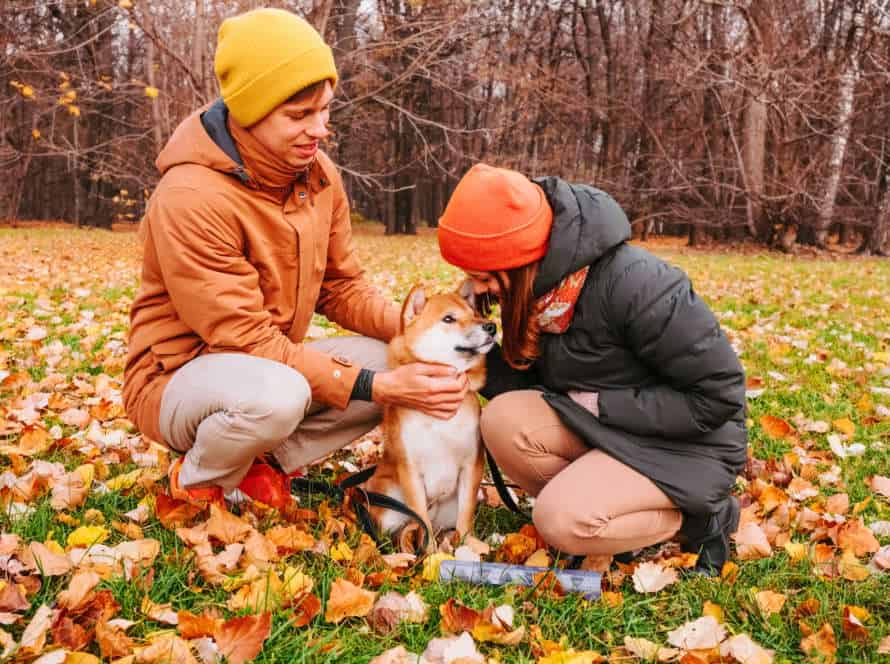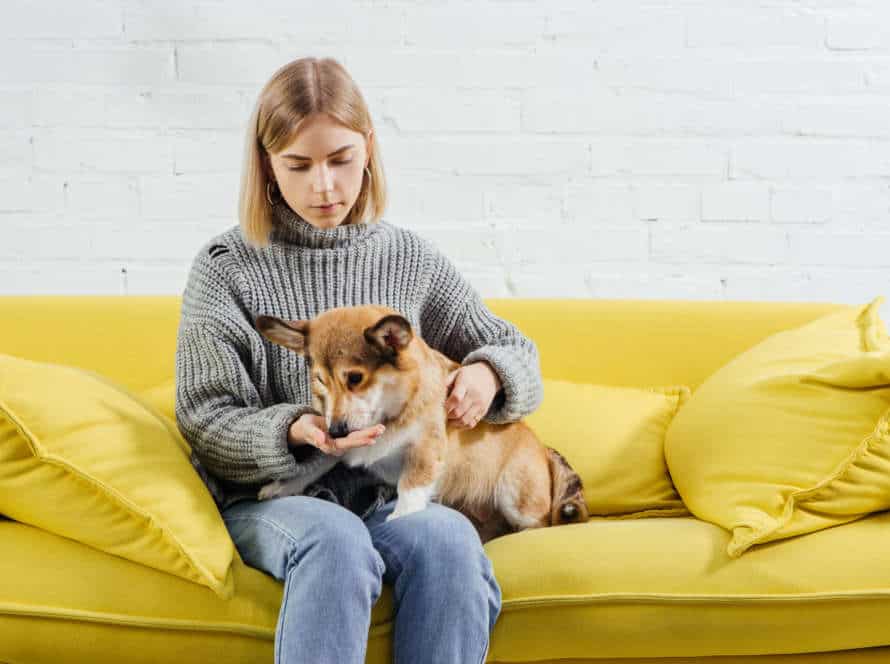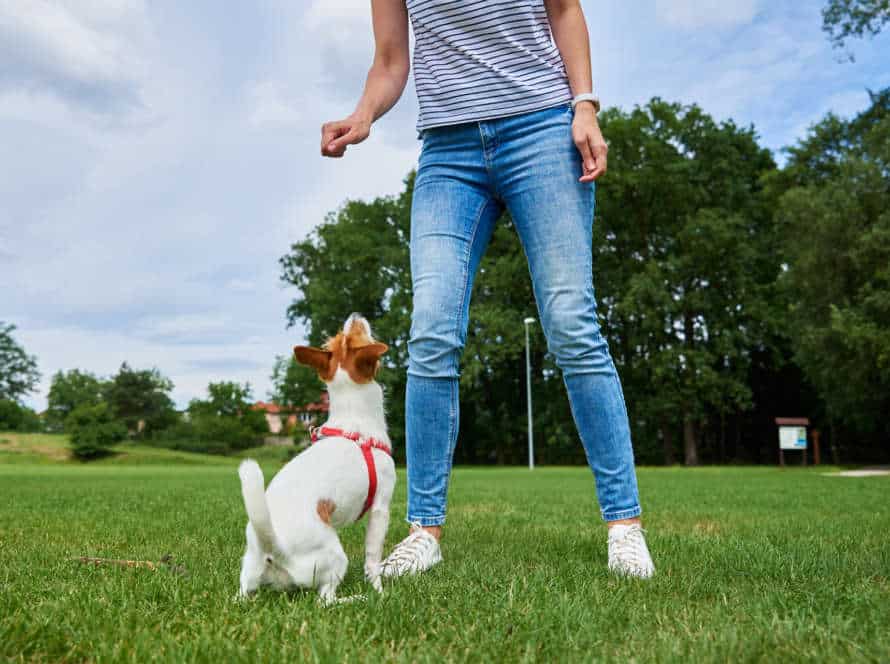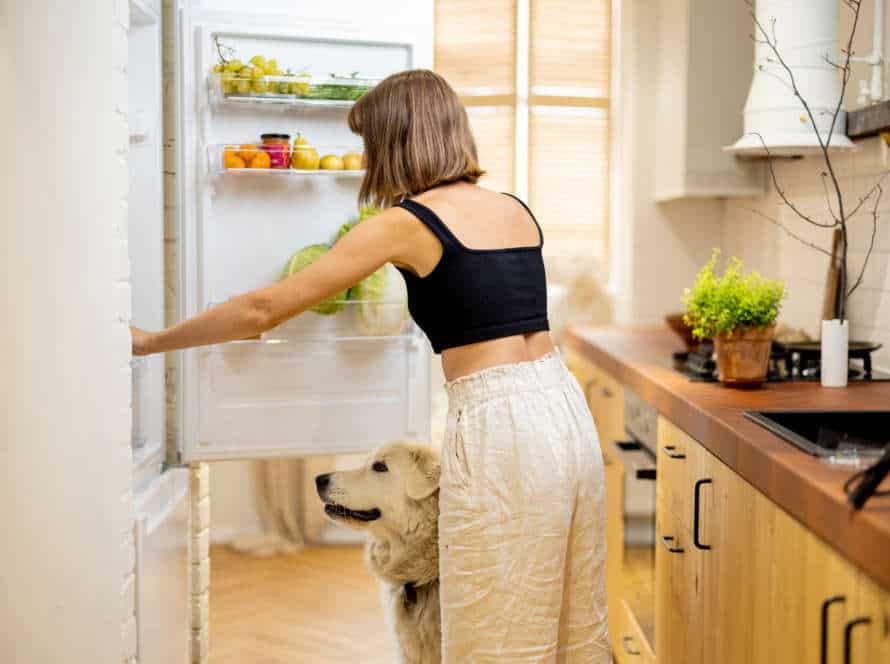Earning Your Dog’s Trust: A Step-by-Step Guide
Winning your pup’s trust is essential for a strong and caring relationship. It takes time, enthusiasm, and constancy to establish it. Use this guide to help you:
- Honor your pup’s distance and personal space. Don’t pressure them in awkward circumstances or overwhelm them with too much affection.
- Create a routine and stick to it. Dogs love consistency; make sure they have regular feeding, fun, and exercise times.
- Utilize positive reinforcement, like treats, acknowledgments, and toys, to promote good conduct and create a solid bond.
- Spend quality time with them —take strolls, play games, and just cuddle or pet them.
- Be understanding, patient, and forgiving. Dogs make mistakes as humans do, and it’s important to stay gentle and patient while correcting their behavior.
- Frequent vet inspections, grooming sessions, and proper nutrition are essential for keeping your pup healthy, which strengthens the tie between you two.
Pro Tip: Take into account that gaining your pup’s trust needs time and effort. Appreciate minor successes on the way and enjoy the voyage with your four-legged friend!
Building a Bond with Your Dog
Forming a strong bond with your pup? It’s all about trust! To build this, you need to know your dog and understand their needs. Also, positive interaction is key. Here’s how to get started:
- Learn the behaviors that earn their trust.
- Implement those behaviors.
- Enjoy your dog’s trust!
Understanding Your Dog’s Body Language
Dogs communicate through body language. To have a good bond and gain their trust, it’s essential to understand their cues. Pay attention to these signals:
- Ears: Upright ears mean alertness or aggression. Loose ears show contentment.
- Tail: Wagging can mean happiness, but speed and direction matter. Tucked tail signals fear or anxiety.
- Eyes: Dilated pupils can mean excitement or fear. Narrowed pupils show aggression or discomfort.
- Mouth: Licking or yawning is stress or discomfort. Baring teeth is aggression.
- Posture: Relaxed with a slightly arched back and a loose gait means contentment. Stiff or crouched posture is fear or aggression.
By recognizing their body language, you’ll understand their needs, emotions and behavior. This will help you build a strong bond with your pup.
Communicating Effectively with Your Dog
Communicating with your pup is important for creating a tight bond and gaining its trust. Here’s a guide to help you deepen the connection:
- Be Specific: Use simple words and repeat commands if needed when training or giving instructions.
- Reward Good Behavior: Instead of punishing bad behavior, give treats, verbal praise and lots of love when they act well.
- Be Patient: Dogs learn at different speeds, so be patient and adjust your training based on your pup’s style.
- Non-Verbal Signs: Dogs understand body language, so use positive physical signs like ear scratches, belly rubs, and gentle nudges to show appreciation and acceptance.
- Be Steadfast: Create a routine for feeding, exercise, and playtime and stick to it. A consistent pattern helps form security and trust.
By following these steps, you can talk to your dog, form a strong bond, and gain their trust.
Spending Quality Time with Your Dog
Having quality time with your pup is vital to form a strong bond and gain their trust. Here are some measures you can take to strengthen your relationship with your four-legged buddy:
- Be there and focus: Put away all diversions and concentrate on having quality time with your dog, it can be through a game of fetch or a long stroll in the park.
- Know your dog’s body language: Comprehending your pup’s body language will assist you in better communicating with them and responding to their needs.
- Put together a routine: Dogs do well with routine, so try to make a steady plan for feedings, exercise, and playtime.
- Utilize positive reinforcement: Use treats, compliments, and rewards to train your pup and boost good behavior.
- Be patient and caring: Establishing a strong bond with your pup takes time, patience, and loads of love. Keep in mind, trust must be earned, and it needs time to develop an intimate relationship with your furry companion.
Positive Reinforcement Training
Positive reinforcement training is a great way to create trust with your dog and form a solid relationship. This method involves rewarding your pup for desirable actions, such as sitting or staying. Not only will this reward the behavior but it will also help you to develop your dog’s trust. In this guide, we’ll go over the importance of positive reinforcement training and how to use it correctly.
Using Treats and Rewards to Train Your Dog
Treats and rewards are key when you’re training your pup with positive reinforcement. This method relies on giving rewards for good behavior, to help them remember it. Here’s a guide to earn your dog’s trust with this style of training:
- Set up a routine and choose the best rewards for your pup.
- Teach basic commands (like sit and stay) with treats and praise.
- Always speak in a positive tone and use positive body language.
- Be consistent, reward good behaviors and redirect from bad ones.
- As your pup becomes more familiar, increase the difficulty of the commands.
- Be patient, stay positive, and have fun during the sessions.
Bonus Tip: End training with a reward and a belly rub – it will help strengthen the bond between you two!
Reinforcing Good Behavior through Clicker Training
Clicker training is a great way to train dogs and reward good behaviors. It involves a small handheld device with a clicking sound when pressed.
Whenever your dog does something good, click the clicker and give them a treat or praise. To make clicker training successful, follow these steps:
- Charge the clicker – Let your pup know the click sound is a good thing.
- Start training – Use the clicker and simple commands to get the ball rolling.
- Shape behavior – Gradually reward closer and closer approximations of desired behavior.
Pro tip: Clicker training not only improves behavior, but also builds trust between you and your pup!
Setting Realistic Goals for Your Dog’s Training
Realistic goals are important for your pup’s training. Positive reinforcement is the most effective and kind way to train. Follow these steps to build trust and set realistic goals for positive reinforcement:
- Start with basic commands. Sit, stay, and come. Then, more advanced commands.
- Keep goals small and achievable. This boosts your pup’s confidence!
- Be consistent. Use the same commands each time and use positive reinforcement.
- Show compassion. Your pup may make mistakes, so be patient and kind.
- Celebrate your pup’s wins! Treats and positive reinforcement keep your pup motivated.
Addressing Behavior Issues
Training your pup to trust and respect you is of utmost importance when it comes to any behavioural issues. To do so, you need to create a secure environment for them and keep things predictable and consistent.
In this guide, we offer some tips and techniques to help you build a strong bond with your furry friend and work through any behavioural issues that may come up.
Identifying and Managing Separation Anxiety
Separation anxiety is a common issue for many dogs. It can show up in different ways – from destructive behavior to too much noise.
First step is to spot the signs. These include: whining, barking and destruction when left alone or when you go away.
To manage it, try these techniques:
- Gradually increase time away from your pet so they can get used to being alone in a safe place.
- Give them a comfy and secure area, like a crate, bed or playpen with their favorite toys. This will help them feel safe and normal.
- Start with brief periods of leaving and reward your pet when you get back.
- Think about using calming diffusers or medications. But speak to your vet before taking any medication.
With patience and training, your dog will feel secure and confident even when you are gone.
Managing Aggressive Behavior in Dogs
Dealing with aggressive doggos can be tough. But you can manage it by figuring out what’s causing it, staying consistent, and giving them positive reinforcement. Here’s a guide:
- Figure out the cause: Is it fear? Territorial instincts? Or maybe trauma?
- Establish rules: Set boundaries and be firm on them.
- Positive reinforcement: Give treats, praise, and playtime when they behave.
- Get help: Professional trainers can be a great resource.
- Show affection: Earn their trust through love and attention.
Pro tip: Be patient, consistent, and calm. Exercise and checkups help, too!
Addressing Fear and Phobias in Dogs
Fear and phobias can cause behavioral issues in dogs. To address them, here’s a guide:
- Identify the fear source. Observe your dog’s behavior to find out what triggers their fear or anxiety.
- Establish trust. Give treats, praise and affection to create a safe environment. This builds trust and positive associations.
- Counter-conditioning. Use positive reinforcement to train your dog to link the fearful object or situation with positive experiences.
- Desensitization. Introduce your dog to the source of fear in a controlled and safe environment to reduce the fear response.
- Seek professional help. Get a professional dog trainer or behaviorist for severe phobias or fear-related aggression to ensure effective and safe treatment.
Creating a Safe and Comfortable Home Environment
To gain your pup’s trust, you need to make a safe and comfy home for them. Get to know your pooch, learn what they like, and offer a place where they can be secure. Here’s a guide that’ll help you craft a home environment that your pup will love:
Providing Your Dog with a Safe and Comfortable Living Space
Create a safe + comfy home for your pup! Here’s how:
- Choose an area free from hazards like cords, sharp objects, and plants.
- Make sure the sleeping area is snuggly with a bed + blankets.
- Give your pup room to move + play – inside and outside.
- Keep food + water bowls away from the bathroom area.
- Set up a routine for feeding, playtime, and walking to provide predictability.
- Bond with your pup through training, playtime, and affection to build trust.
Providing a Balanced Diet and Regular Exercise
Providing your pup with a nutritious diet and regular exercise is essential for a safe and cozy home. A balanced meal of protein, fats, and carbs gives the correct nutrition for your pup’s growth and health. Carbohydrates give energy for your pup’s active lifestyle. Plus, it can prevent health problems like obesity, heart disease, and arthritis.
Regular exercise is great for your pup’s physical and mental health. It relaxes them, lowers stress and anxiety, and stimulates the mind. Exercise also reduces the chances of behavioral issues from boredom and high energy levels.
By giving your pup good nutrition and exercise, you create a strong foundation for a long and healthy relationship.
Pro tip: Before changing your pup’s diet or starting an exercise program, consult your vet. This ensures that the changes are right for your pup’s age, breed, and overall health.
Giving Your Dog Love and Affection
Dogs need love just like humans. Here are a few ways to show them you care:
- Physical Touch – Pet them, hug them, and rub their belly. This way they can feel loved and relaxed.
- Playtime – Make time each day to play with your pup. This could be throwing a ball, tug-of-war, or running around the park.
- Verbal Affirmations – Say things like “good boy” or “good girl” when they do something right.
- Treats – Give treats as rewards for specific tasks or behaviors.
- Quality Time – Go for walks, watch TV together, or just sit in the sun.
Remember to be patient and understanding with your dog. It takes time to build a connection but they will show you love if you show them you care.
Maintaining Your Dog’s Trust
Gaining and keeping confidence with your pup is very important. You’ll have to have patience and put in some work. Here’s a few tips to make sure your furry friend trusts you and listens:
- Make sure to give lots of love and attention
- Provide them with healthy treats
- Follow commands
- Additionally, practice patience
- Take time to get to know them
- And be consistent
Doing this will help your pooch stay trusting and obedient.
Consistency in Training and Interaction
Consistency is key for gaining and keeping your dog’s trust. It helps them feel secure and know what’s expected of them. Here are some tips to stay consistent:
- Use the same commands and rewards to reinforce good behavior.
- Set routines for feeding, exercise, and playtime.
- Have regular training sessions – keep them short and positive.
- Ensure rules and boundaries are consistent.
With consistency, your dog will feel safe, happy, and affectionate to you.
Understanding Your Dog’s Changing Needs
It’s critical to recognize your dog’s changing needs to keep their faith and create a stronger bond with them. As dogs get older, their needs alter and it’s essential to adjust your care to those changes. Here are some tips to help you maintain and gain your canine’s trust:
- Notice their body language and behavior for clues on what they need.
- Adjust their diet in accordance with their breed, age and health.
- Adapt their exercise regime to suit any physical limitations due to aging.
- Be tolerant when training and use positive reinforcement to motivate good behavior.
- Exhibit love and spend quality time with your pup regularly to strengthen your link.
Every pooch is different and will have their own special needs. Keeping an eye on your doggy’s needs and changing your care accordingly will help keep their faith and intensify your relationship.
Building a Lifelong Relationship with Your Dog.
Constructing a bond with your pup that lasts forever necessitates gaining and keeping their trust. Follow this step-by-step guide for getting and maintaining your dog’s trust all through your time together.
- Step 1: Honor your dog’s boundaries and individual space.
- Step 2: Make a routine to give your pup a feeling of predictability.
- Step 3: Utilize positive reinforcement to teach your pup new habits and tricks.
- Step 4: Guarantee your pup always feels safe and secure in their atmosphere.
- Step 5: Spend quality time with your pup, taking part in activities they love.
- Step 6: Employ a consistent attitude in your connections with your pup, implementing your guidelines and expectations.
Keep in mind, trust is built over time, so be patient and constant in your attempts. With time, patience and love, your pup will form an unbreakable bond with you that will last forever.
Pro tip: Regular grooming and exercise are also essential for forming a strong bond with your pup. Regular grooming helps build a physical bond, while regular exercise helps create a mental bond, strengthening loyalty and trust between you and your furry pal.
Frequently Asked Questions
1. How can I earn my dog’s trust?
The key to earning your dog’s trust is to be patient, consistent, and positive. Spend time with your dog, establish routines and rules, reward good behavior, and avoid punishment or yelling.
2. How long does it take to earn my dog’s trust?
There is no set timeline for earning your dog’s trust. It depends on their personality, history, and experiences. Some dogs may trust you within a few days, while others may take weeks or even months.
3. Can I earn my dog’s trust if they were abused or mistreated in the past?
Yes, you can earn your dog’s trust even if they were abused or mistreated in the past. It may take more time and patience, and you may need to work with a professional trainer or behaviorist for guidance.
4. Should I give my dog treats to earn their trust?
Using treats is a great way to reinforce good behavior and build a positive relationship with your dog. When giving treats, make sure they are healthy and given in moderation.
5. What should I do if my dog doesn’t trust me?
If your dog doesn’t trust you, it’s important to identify the reasons why. You may need to work with a professional to address any behavior or training issues, and to establish a positive, consistent routine for your dog.
6. How can I tell if my dog trusts me?
You can tell if your dog trusts you if they are relaxed and comfortable around you, follow your commands, and seek you out for affection and attention.

